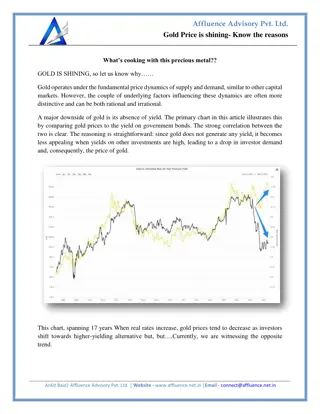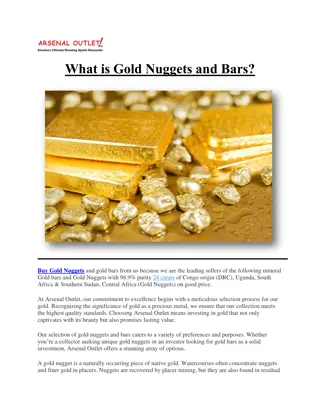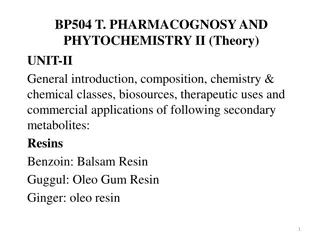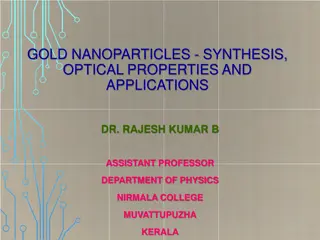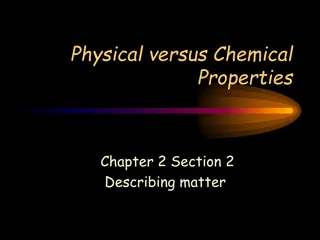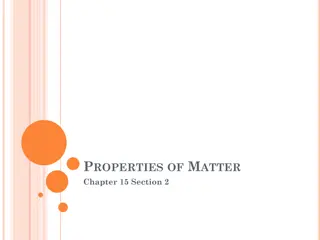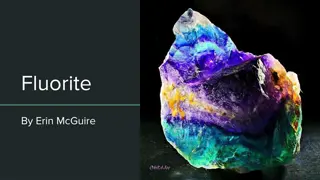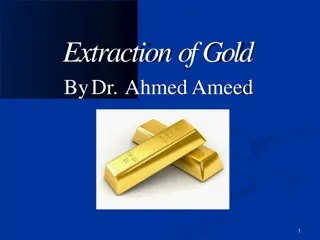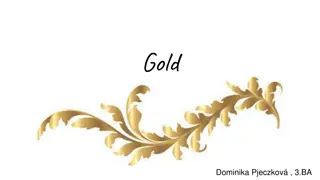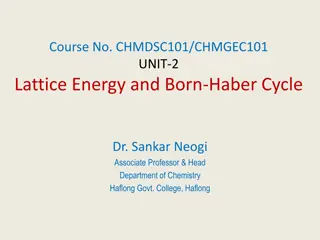Chemical Properties and Occurrence of Gold
Chemical properties of gold, including its resistance to acids and halogens, as well as its ability to form cyanide complexes. Learn about the occurrence of metallic gold in nature and its value. Discover how colloidal gold solutions are prepared through different methods."
Download Presentation

Please find below an Image/Link to download the presentation.
The content on the website is provided AS IS for your information and personal use only. It may not be sold, licensed, or shared on other websites without obtaining consent from the author.If you encounter any issues during the download, it is possible that the publisher has removed the file from their server.
You are allowed to download the files provided on this website for personal or commercial use, subject to the condition that they are used lawfully. All files are the property of their respective owners.
The content on the website is provided AS IS for your information and personal use only. It may not be sold, licensed, or shared on other websites without obtaining consent from the author.
E N D
Presentation Transcript
Gold Course Instructor: Dr. Atul Kumar Singh Assistant Professor Department of Chemistry M. L. Arya College, Kasba Purnia -854330 India
Gold Symbol: Au Group: 11 Period: 6 Atomic number: 79 Melting point: 1064.18 C (1974.52 F) Boiling point: 2970 C (5378 F) Electronic Configuration :[Xe] 4f14 5d10 6s1
Oxidation state: -3, -2, -1, 0, +1, +2, +3, +5 Electronegativity: pauling scale 2.54 Ionisation energies: 1st 890.1kJ/mol 2nd 1980 kj/mol Atomic radius: 144 pm Covalent radius: 136 6 pm Van der waals radius: 166 pm
Occurrence: Metallic gold, which is found free in nature, has always been valued for its nobility, i.e. its resistance to chemical attack. Gold occurs in native state either scattered in sand and gravel or mixed in quartz. The mineral sylvanite contain a telluride of silver and gold [(Au, Ag)Te2 ]
Chemical Properties Metallic gold, which is found free in nature, has always been valued for its nobility, i.e. its resistance to chemical attack, air, moisture, carbonvdioxide, hydrogen sulphide and even most of acids. 1. Action of Acids: It is not attacked by HF, HCl, sulphuric acid and nitric acid but dissolve in aqua regia.
2. Action of Halogens Gold reacts with Chlorine and bromine to form respective trihalides, AuX3. it reacts with iodine to form monohalide
3. Action of potassium cyanide solution Gold dissolves in alkali potassium cyanide in the presence of air or oxygen due to formation of cyanide complex.
Colloidal Gold Colloidal solution of gold can be generally prepared by 2 methods (i) Bredig s method (ii) By reducing gold chloride Gold chloride is reduced by reducing agent like formaldehyde, hydrazine hydrate, yellow phosphorus, CO etc. When gold is precipitated along with another colloid, a solid colloidal solution of purple tint is obtained commonly known as Purple of Cassius. This is prepared by adding a mixture
of stannous chloride and stannic chloride solution to a solution of gold chloride. Purple of Cassius is generally used for making ruby glass and high class pottery.



